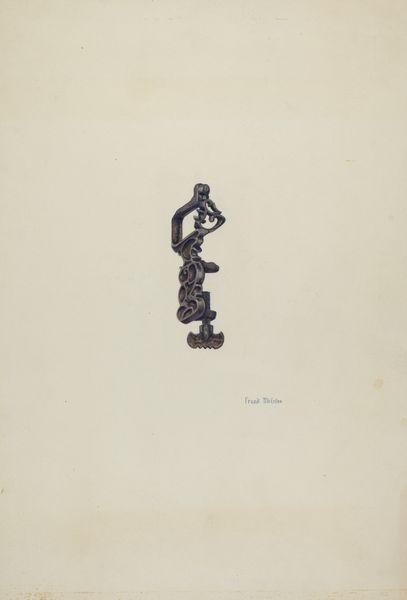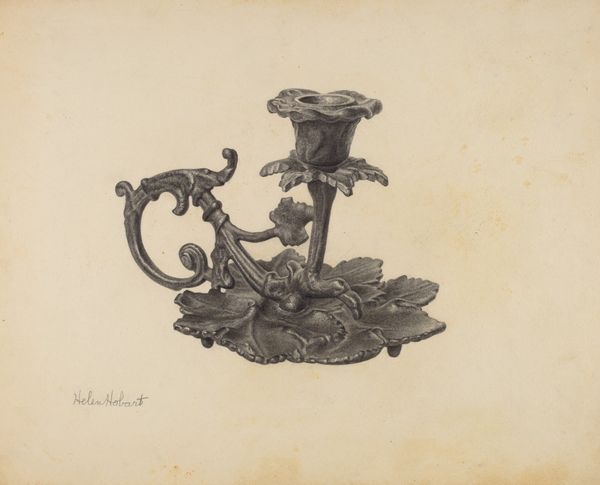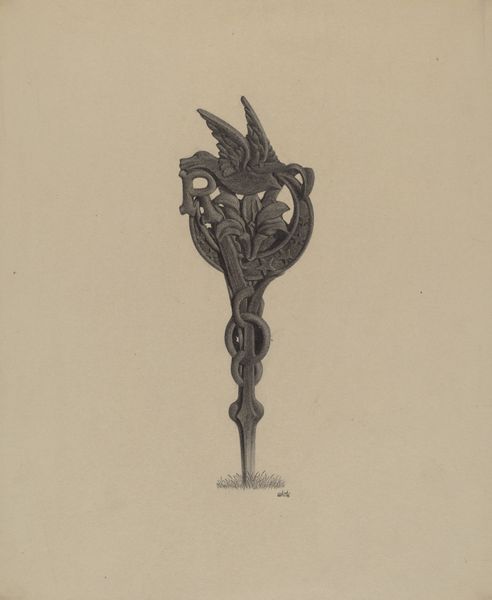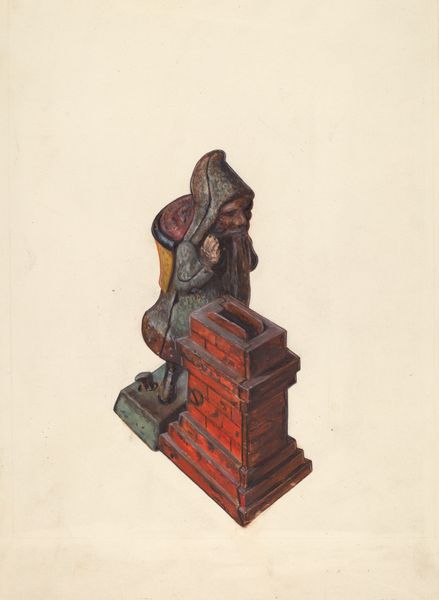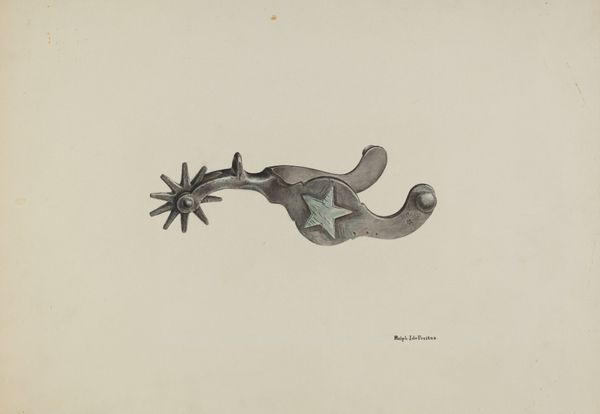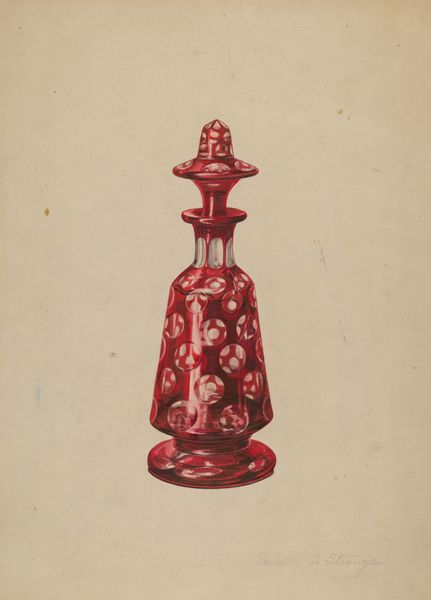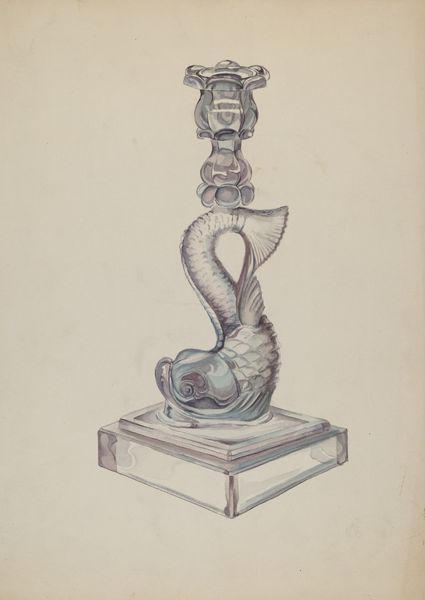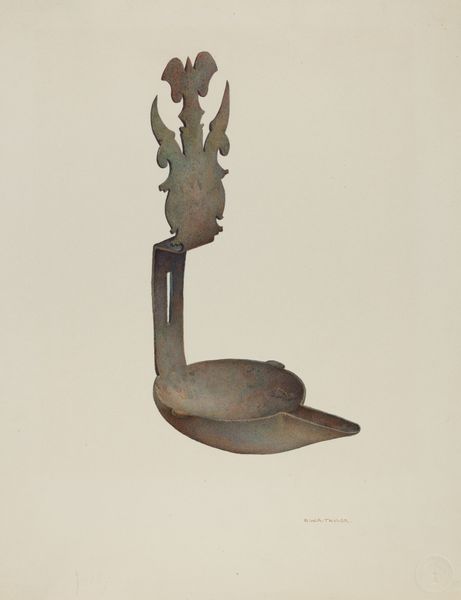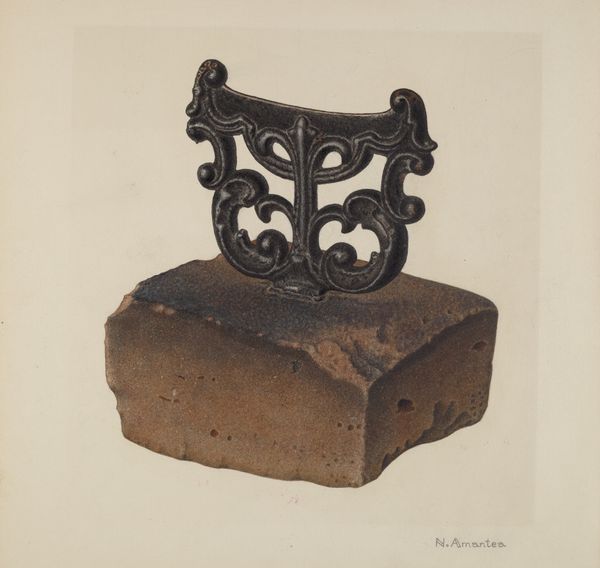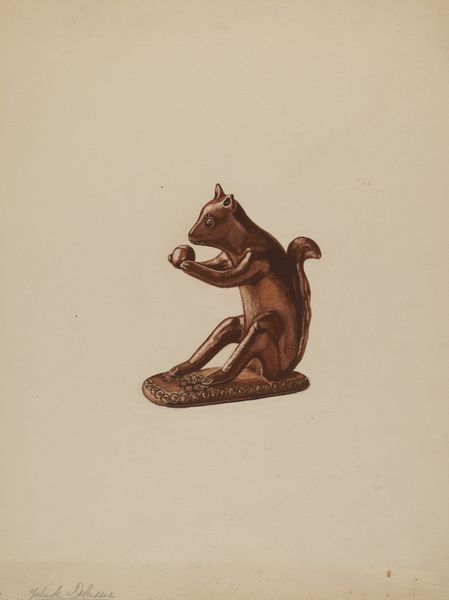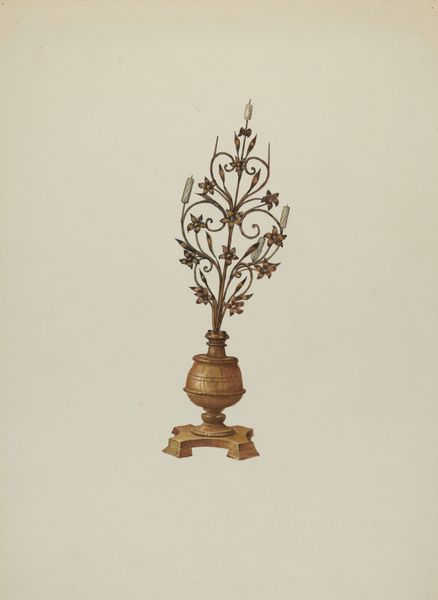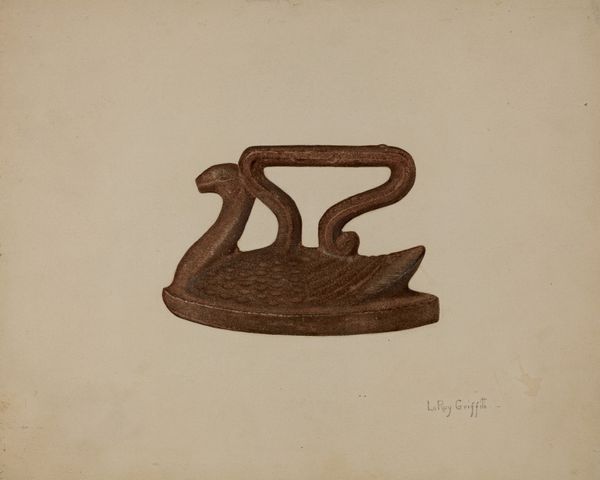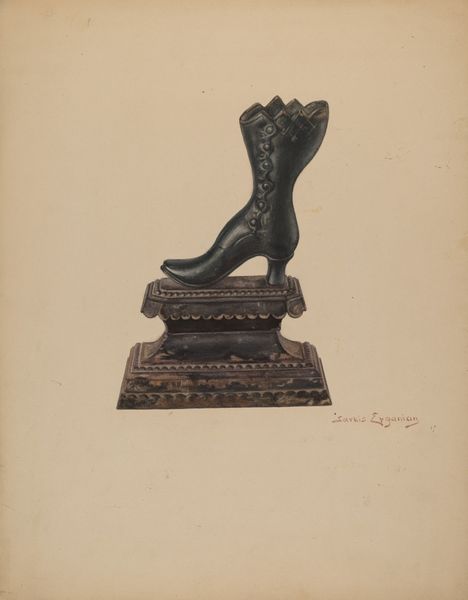
drawing, pencil
#
drawing
#
pencil drawing
#
pencil
#
realism
Dimensions: overall: 28.9 x 21.6 cm (11 3/8 x 8 1/2 in.) Original IAD Object: 3 5/8" high; 3 1/2" long; 2 1/2" wide
Copyright: National Gallery of Art: CC0 1.0
Edward W. Buechner made this paperweight depicting a deer, though the exact date remains unknown. Its appearance suggests it was probably cast in iron, a common industrial material that found its way into both functional objects and decorative items. The choice of iron is telling; its weight and solidity perfectly suit the purpose of a paperweight, holding documents firmly in place. But it also reflects the rise of mass production, where iron casting enabled the creation of multiples, bringing sculptural forms into everyday life. The deer motif adds another layer of meaning, evoking a sense of nature and the wilderness, a common theme in decorative arts of the period. Yet, this natural form is rendered in an industrial material, blurring the lines between the natural and the manufactured. Considering the material, making, and context of this paperweight allows us to understand its significance beyond mere functionality. It stands as a testament to the evolving relationship between craft, industry, and aesthetics in a rapidly changing world.
Comments
No comments
Be the first to comment and join the conversation on the ultimate creative platform.
